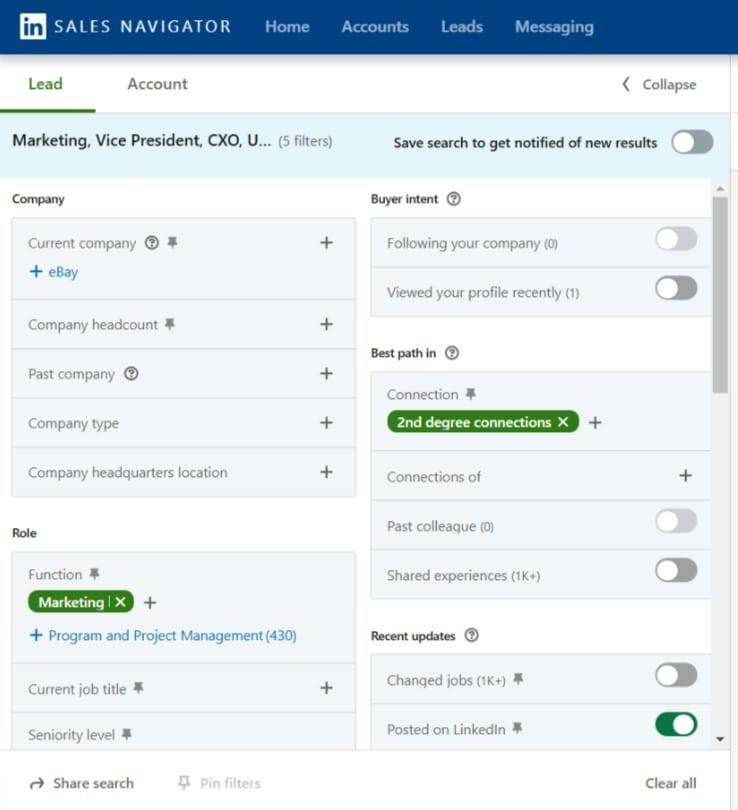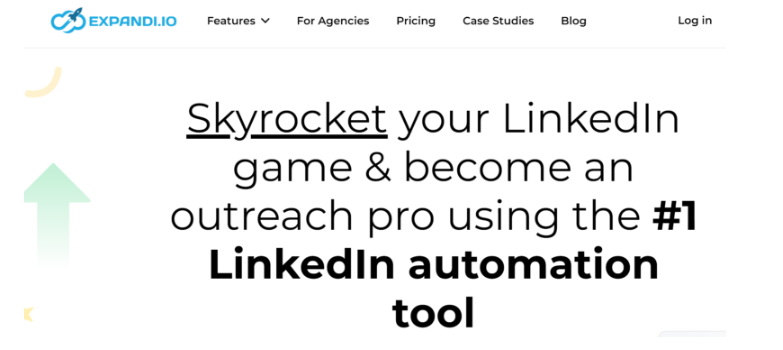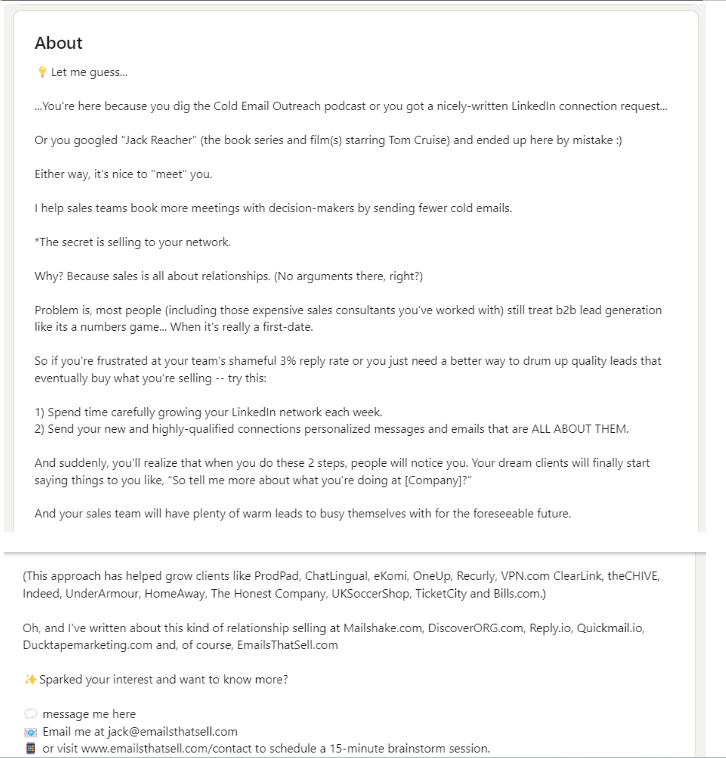Wondering if LinkedIn will drive more qualified sales leads to your business?
Well, the answer is yes.
Think about it.
According to stats, LinkedIn has about 922.3 million users. This isn’t just a tiny pond of prospects to tap into.
It’s a huge pool of potential customers that you can refine and target.
If you know how to do LinkedIn lead generation correctly, you’re going to end up with qualified leads that turn into sales.
We are currently receiving 25-55% reply rates and 40% on average connection request acceptance rates.
This is the strongest marketing and outreach channel that we have ever seen.
And stats also show that LinkedIn has 2x higher conversion rates than cold email, for example.
If you’re looking for b2b lead generation strategies that actually work, and also like a POSITiVE reply rate of between 25 and 50%, keep reading.
In this article, we will share our exact LinkedIn lead generation strategy, which, when done correctly, will give you 1 lead per day.
(Need some help with your LinkedIn strategy? Hop on a free 15 minute strategy session with the CEO of SalesBread, Jack Reamer.)
First, invest in some LinkedIn b2b lead generation tools
A mechanic can’t fix a car without tools. In the same way, you can’t expect to find qualified leads if you aren’t using the right prospecting tools.
Sure, there are many tools on the market, including automation tools that send hundreds of messages on your behalf, which might sound great in theory.
Still, in practice, if you aren’t careful, these tools could risk your LinkedIn account getting suspended.
We will list some of the prospecting tools we use at SalesBread.
(Remember, we only want to use the safest prospecting tools. Tools that won’t get our client’s accounts suspended, and tools that help us refine our client’s ideal target audiences .)
We have personally found that these are the best prospecting tools to use for LinkedIn outreach.
1. LinkedIn Sales Navigator
LinkedIn Sales Navigator is a tool that every sales team should have access to.
Depending on which package you choose to invest in, you will have access to various features and advanced filters that will make your lead-generation efforts so much easier.
For $99 per month, you will receive:
-
Linkedin Subscriptions
-
Extended Network Access: Unlimited search, Saved searches, Who’s viewed your profile in the past 90 days
-
50 Inmails per month
-
Advanced search filters and sales spotlights
-
Lead and account recommendations
-
Integration with your sales tools –
-
Saved leads/accounts, Custom lists, Alerts, Notes
If you have a customized prospect list, you can just plug it into Sales Navigator and get ultra granular about how you target prospects.
For example, you can filter by:
-
Job title
-
Geography
-
Company size
-
Seniority
-
Function
-
Industry

Then use advanced filters to narrow down your search further.

Some of the top filters that agencies like SalesBread use are:
-
Keywords
-
Custom Lists
-
Past Lead and Account Activity
-
Geography
-
Relationship
-
Industry
-
School
We have written various articles on how to use Sales Navigator the right way. Please see the articles below which will dive deeper into how to use Sales Nav the right way.
2. Expandi.io

So yes… Expandi is an automation tool.
But after using it since conception, we have never had a client’s account restricted, suspended, or blocked.
In our opinion, it’s the safest automation tool because it mimics human behavior. This makes it really hard for LinkedIn to pick up that you’re using an automation tool.
Expandi is great for extracting data. Once you have your list, you will then grab each URL, which Expandi will scrape, and then add the information to your connector campaign automatically.
It also has safe limits when it comes to messaging, so you don’t have to worry about getting your LinkedIn account blocked.
Here are some features:
-
A dedicated IP address
-
Safe messaging limits
-
Delays between messages
-
Auto warm-up features
-
Cloud-based
Expandi is pretty affordable too, at $99 per month per seat.
3. Apollo.io
Apollo helps us to narrow down our lists, but also find contact information. Apollo gives you the most accurate data for over 220 million contacts and 30 million companies.

Apollo also has various filters that you can use to build laser-focused prospect lists.
They offer a free plan, but you also have more advanced packages that cost about $99 per month, or $79 per month if you pay annually.
4. Crunchbase
Crunchbase allows you to build defined lead lists through various filters. It’s great for finding companies to reach out to.

Crunchbase offers various search filters from companies to funding and even events. It costs $49 per month for the most popular package.
NOTE: We like using third-party data providers because it helps us refine our lists and find accurate data. We then use Sales Navigator to double-check that everything is accurate.
These are just some tools to use, but at SalesBread, we use various tools depending on which people or companies we are targeting.
This article goes into more detail on the tools we like to use for our lead-generation campaigns.
Our LinkedIn lead generation strategy
Step 1: Update your LinkedIn profile
Look at your profile before you begin reaching out to new leads.
Your profile says a lot about you. If it isn’t professional or just reads as a resume, prospects won’t be interested in engaging with you.
Your LinkedIn profile can act as a great sales page for your business or yourself.


Notice how in Jack’s about section, he mentions how Salesbread can solve pain points.
For example, we use ultra-personalized messages and emails that are all about the prospect.
The call to action at the end of the “About section” is pretty direct and easy to follow. All of Jack’s contact details are in the About section, easy for prospects to find, and simple to click.
Make it as easy as possible for your ideal customers to reach out to you.
Notice what this LinkedIn user had to say about his profile:


Don’t underestimate the power of your LinkedIn profile and how it can convert leads into sales.
Social media and short-form content play a major role in building authority and thought leadership.
If you can show your prospects that you really know what you’re talking about, and you have case studies and data to back up your claims; the chances of them trusting you with their hard-earned money will be so much greater.
Once you have the right prospecting tools and your personal profile on LinkedIn is an awesome sales page, follow the next steps for generating high-quality leads.
Step 2: Build an ultra-refined list of prospects based on current buyer data
We often see other lead generation agencies build very basic lists of prospects.
For example, a client might go to them and say that their ideal customer profile is clients in the HR space, based in England.
So this is a good start, but this broad view of targeting increases your chance of failure.
Why?
Because you have to dig deeper and actually analyze in great detail exactly WHO is buying from you.
So yes, it might be prospects in HR based in England, but what else does the data tell you about your current buying customers?
Which pattern keeps coming up time and time again?
For example, ask yourself:
-
Have all my buyers recently been funded?
-
Do they all have a similar marketing budget?
-
Do they use specific social media platforms?
-
Who is the decision maker? Is it the founder? The CFO? The marketing manager?
-
Do they all make use of inbound marketing?
-
Where are they located?
-
Which industries are they in?
-
Do they all belong to the same LinkedIn groups?
-
Or have they suffered a PR disaster?
-
What are their demographics?
-
Do they use the same CRM tool?
Pretty soon, patterns will begin to emerge, and when you narrow in on these patterns, it helps you build look-alike lists of b2b businesses or customers who actually:
A.) Need what you’re selling
B.) Have the budget
The video below shows how we analyze current buyer data for our clients.
Step 3: Filter it through your second-degree network and recently posted
Once your list is 95% accurate, plug it into LinkedIn Sales Navigator and filter it through your second-degree network and recently posted.
Reach out to those prospects first before reaching out to third-degree connections.
The reason for this is that stats have shown, prospects are 2x more likely to engage with you if you’re in their second-degree network.
These prospects have already accepted someone like you in the past, so the chances of them accepting you will be greater.
You already have a shared connection.
And why only reach out to people who have recently posted something within the past 30 days?

Well, it’s simple…
It shows you that they are active on LinkedIn.
There is no point in messaging someone on LinkedIn if they never use the platform.
Rather, add them to a cold email marketing strategy or send them an SMS.
This step refines your list even more. So once you begin your campaign, you will have the confidence knowing that you are ONLY reaching out to people who really need what you’re offering.
This ensures LinkedIn lead generation success, which in turn equals more sales.
Step 4: Write ultra-personalized connection request messages using our CCQ method
LinkedIn campaigns can end up being a total flop if you don’t use personalized messaging. And when we say personalization…
We mean SPECIFIC personalization.
Not just basic…Name, company name, blah blah blah sales pitch…
That’s not going to bring in sales leads.
So what kind of messages actually work?
Hi {firstName}, {custom Intro} After reading that you’re working on {specific project responsibility} for {type_of_client}, I’d like to find out how you’re dealing with {current pain point}.
My company is working on new ways to handle {unique benefit} for {customer_type}.
But I’m curious to hear what’s been working for {Company} lately, if you’re open to exchanging ideas around {pain point}.
How’s Thursday or Friday looking to connect?
Read our article: 60 LinkedIn Connection Request Message Templates for some inspiration.
Notice in the above message, we asked the prospect a question.
This is part of our method called CCQ.
It stands for:
-
Compliments
-
Commonalities
-
Questions
Basically, this means that when you’re researching prospects for personalization, find something specific that you can use to write a personalized intro sentence for the prospect.
Find something to either compliment them on, mention a shared commonality, or ask a question.
To find this information, you could look at the prospect’s company page on LinkedIn, their LinkedIn page, or even just use Google.
For example, if they hosted an informative webinar, you could always compliment them on it, and mention something specific that you enjoyed.
Also, when you use specific personalization, it sets you apart from every other spammy salesperson on LinkedIn.
Most messages on LinkedIn are pretty salesy, so when you write something specific for a prospect, it makes them stop and think that your message isn’t a sales pitch.
It’s something personal just for them.
Because of this, they will be more likely to respond to your messages.
Here are some replies we have received from prospects because of this approach:



Step 5: Follow up consistently

The Fibonacci sequence is a set of numbers that you can use to space your outreach messages.
The Fibonacci sequence follows the idea that the more sales emails, or LinkedIn messages you send in a short space of time, the more replies you will receive.
BUT it starts to slow down over time so that you are not seen as annoying.
Here is an example below:
The Fibonacci Sequence is the series of numbers:
0, 1, 1, 2, 3, 5, 8, 13, 21, 34, …
The next number is found by adding up the two numbers before it: The 2 is found by adding the two numbers before it (1+1), the 3 is found by adding the two numbers before it (1+2), the 5 is (2+3), and so on!
You can start your outreach methods by sending your LinkedIn messages or Inmails quite close together.
So you would send a message on day 1, day 2, day 3, and then on day 5, 8, 13, and so on.
This helps in the sense that initially, you have many messages in your sales funnel that are frequent, but then they slow down over time.
Step 6: Use a low-commitment call to action
Lastly, make it as easy as possible for the prospect to reply to you.
Don’t ask for an hour meeting or for them to watch a 2-hour webinar.
Keep it simple.
Ask to hop on a quick 10-minute call, or ask the prospect for the calendar link for you to set up a meeting.
The simpler your CTA is to implement, the higher your chances will be of generating leads.
Be clear in your call to action so that the prospect knows exactly what you want from them.
Here are some examples:
-
If this resonates with you, can we hop on a quick 5-minute call next week?
-
Send me your Calendly link and I will book a quick appointment.
-
Are you available next week for 5 minutes to discuss XYZ?
-
Are you available for a chat?
-
How is your availability for a 10 min call this week?
-
I’d love to share more on why you may need [PRODUCT] and how it can help [BENEFIT]. How’s {=day}} next week look for a 15-minute call?
-
Are you free for a call this Friday to discuss [MAIN BENEFIT]?
-
What’s the best way to schedule 5 minutes to talk?
-
Would you have some time next {{=day}} to discuss?
-
If you find the spec interesting, should we set up a confidential chat?
What about LinkedIn content and ads?
We aren’t against using multiple methods to generate leads. In fact, we make use of a variety of marketing methods.
But just be wary of using LinkedIn ads.
And I will tell you why…
We have had many clients come to us in the past, and they had spent thousands of dollars on LinkedIn advertising, and never even received one lead.
And in regard to content marketing on LinkedIn, we have seen some agencies have great success.
It probably depends on who your target audience is and what you’re selling.
But you can use LinkedIn to build trust and credibility. Thought leadership goes a long way. If your followers can see that you’re an expert in you’re field, they will be more willing to reach out to you.
As long as you are sharing relevant content with your audience and it’s helpful, content marketing on LinkedIn could work for you.
This article from Hubspot is pretty helpful if you would like to consider content marketing on LinkedIn.
LinkedIn Lead Generation Frequently Asked Questions
What are some tips for creating a great LinkedIn profile for B2B lead generation?
Create a great LinkedIn profile for B2B lead generation by including a professional photo, a strong headline, a detailed summary of your expertise, relevant experience, and skills. Also, don’t forget to use keywords that your target audience is searching for.
How can engaging with content on LinkedIn help with B2B lead generation?
Engaging with content on LinkedIn is key to building your credibility and visibility within your industry.
By liking, commenting, and sharing valuable content, you can attract the attention of potential leads and establish yourself as a thought leader.
What role do LinkedIn groups play in B2B lead generation?
LinkedIn groups are a great way to connect with like-minded professionals, share valuable content, and engage in discussions related to your industry.
By actively participating in relevant groups, you can build relationships with potential leads and expand your network.
Need help?
If you aren’t happy with your B2B LinkedIn strategy and need more qualified sales leads, we would love to help you.
